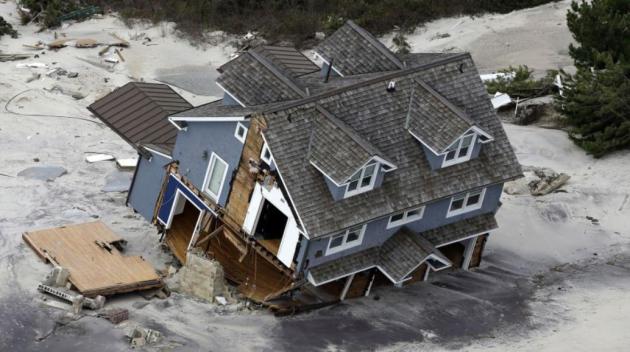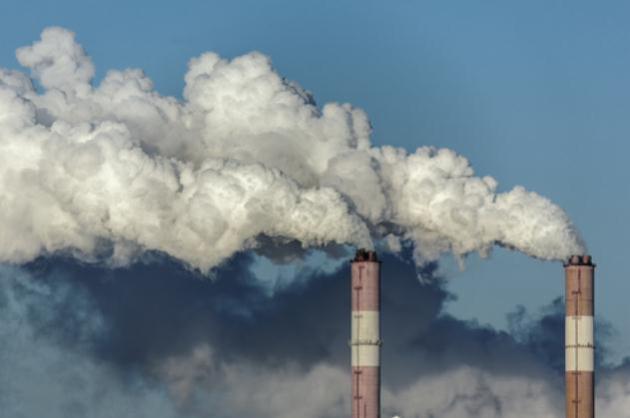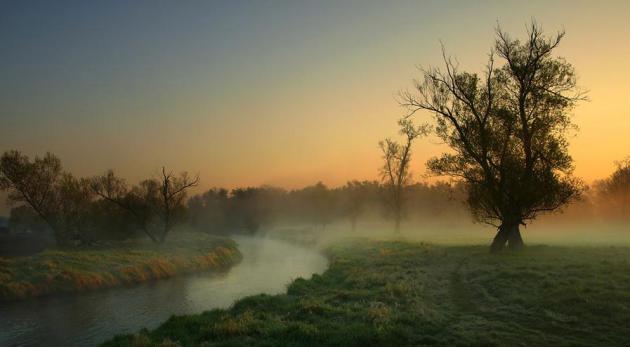72 F. high temperature yesterday in the Twin Cities.
61 F. average high on October 11.
85 F. high on October 11, 2015.
October 12, 1969: Snow accumulates in several locations. Minneapolis receives 2 inches, while St. Cloud records 3.6 inches, Redwood Falls gets 1.7 inches, and Springfield records 1.5 inches.
October 12, 1918: Dry fall weather sets the stage for dangerous fires. Several fires roar through large areas of Carlton and St. Louis Counties. The towns of Cloquet, Moose Lake and Brookston are the hardest hit. The Carlton County Vidette calls it a ‘Hurricane of burning leaves and smoke’. At least 453 fatalities are reported, and possibly as many as 1,000 occurred. Over 11,000 people would be left homeless.
Loading The Dice In Favor of Stronger Hurricanes?
If you have friends or family living on Florida’s east coast chances are they’re counting their blessings. Had Matthew’s track been 30 miles farther west damage and loss of life could have been catastrophic.
The Atlantic is 1-2F warmer than a century ago. Hurricanes get their strength from warm ocean water, and Matthew went from a tropical storm to a Category 5 in 36 hours. I’ve never seen that before in the Atlantic basin. Weather models are pretty good now – but they’ll never be perfect. Officials have to err on the side of safety.
But where do you safely move evacuees? 12-18 inches of rain fell across North Carolina, 100-200 miles inland from the coast. With hurricanes there are no easy answers.
After a couple of lukewarm days today will be an atmospheric reality check; a cool, clammy slap across the face as northwest winds chase puddles into Wisconsin.
Kiss your begonias goodbye, because most suburbs will wake up to a frost Thursday morning. We just can’t shake this soggy pattern. Models pull in more showers from Saturday into much of next week.
Will this translate into more snow this winter? A guy can dream.
* October 7 file image of Hurricane Matthew: NOAA and AerisWeather AMP.

Morning Showers – Cooling Down. Any doubts in your mind that it’s not really autumn will be erased today with windblown showers and temperatures in the 40s, but we should dry out a bit this afternoon. 4km NAM Future Radar courtesy of NOAA and AerisWeather.
Closer to Average. ECMWF guidance shows temperatures close to average looking out the next 10 days; the best chance of a frost or freeze coming Thursday morning. No big surprises or shocks to the system – not yet. Source: WeatherBell.
Mild Finish to October? No Halloween blizzards brewing – not this year, in fact the 2-week prediction for 500 mb winds shows a persistently warm ridge over the eastern half of America; unusually cool and stormy weather for much of the western USA.
Minnesota Sees Most Active Severe Weather Season Since 2010. Cody Matz reports for KMSP-TV: “The 2016 severe weather season in Minnesota was about on par for the 20 year average across the state which included several hundred high wind reports, about a couple hundred large hail reports, and a few dozen tornadoes. But considering it was the most active severe weather season in 6 years means it has been pretty quiet around here for a while. The reports statewide were up 230 from last year totaling 637 across the state. 44 tornadoes were also reported which is slightly above average for overall tornadoes in the northern most tornado alley state, BUT is the most tornadoes we have seen since the record breaking season of 2010 where 145 tornadoes touched down, leading the nation that year, the first time in history...”
Mean Date of First Frost. Here is the average date of the first 32-degree low temperature across the USA.
North Carolina Flooding Is So Severe That Rescuers Need Sonar to Locate Cars, Victims. Andrew Freedman has the story at Mashable.
Photo credit: “A man holds onto a yield sign after trying to swim out to help a truck driver who was stranded in floodwater from Hurricane Matthew in Hope Mills, N.C., Oct. 9, 2016.”
Fleeing the Coast Before the Storm, Only To Be Trapped Inland. Which raises the inevitable question: where DO you put all those people fleeing the coastal storm surge? Inland flooding may be just as big a threat, as Matthew reminded meteorologists and emergency managers. Here’s an excerpt from The New York Times: “…Some higher power may know exactly where hurricanes are going, but even with modern technology, humans have to guess. As countless residents and public officials learned in the last few days, this makes the question of evacuations — whether or when to flee, who is in danger and who is safe — an extraordinarily complicated call, and one particularly vulnerable to second-guessing…Everybody’s a meteorologist,” said Mr. Hodges, the former governor. “That’s part of the problem: They have access to much of the same information and will be trying to make their own decisions rather than waiting for some sort of specific evacuation order...”
Twitter photo credit: Lorie Moore.
18.38″ rain from Matthew at Elizabethtown, North Carolina. NOAA has a long list of rainfall amounts here.
Storm Damage Imagery from Hurricane Matthew. I haven’t seen this before – aerial images in the wake of a hurricane to gauge the extent of wind and storm surge damage along the coast. Web link courtesy of NOAA.
Hurricane Matthew: Trail of Devastation; 28 Dead Across 5 Southern States. Here’s an update via ABC News.
Hurricane Matthew Challenged Latest Prediction Tech. Yes, GOES-R should help. Here’s an excerpt from The Orlando Sentinel: “The technology behind predicting tropical storms and hurricanes faced a tough test last week — and that, ironically, could delay a Space Coast company’s attempts to improve forecasting. Because of operational delays at Cape Canaveral after Hurricane Matthew, the GOES-R satellite might not launch Nov. 4 as scheduled. A spokeswoman for United Launch Alliance, which will launch the satellite, said the launch “may be delayed a few days.” The satellite and its ground systems were sold to the National Oceanic and Atmospheric Administration by Melbourne-based Harris Corp. and Lockheed Martin, which has a significant presence in Central Florida…” (Rendering: Lockheed Martin).
Record Number of USGS Sensors Deployed for Hurricane Matthew. Details via USGS.
How Did Hurricane Matthew Become So Threatening So Quickly? NOVA Next has more perspective: “…Warm water fuels hurricanes, and over the past week, water temperatures have been about 85° F in the Caribbean where Matthew first intensified. While that is a little above normal, the water off the Atlantic coast is even warmer when compared to the seasonal normal. Average ocean temperatures have risen over the last century, with parts of the Atlantic now 1-2°F warmer than a century ago. While warm water isn’t the only factor that determines how strong a hurricane can get, it is a key ingredient. There is the expectation that hurricanes and typhoons across the globe will last longer and produce more rain by the end of the century, according to the research compiled in the 2013 IPCC Fifth Assessment Report…”
Image credit: “This visible image from NOAA’s GOES-East satellite shows the location of Hurricane Matthew on October 7 at 2:30 pm EDT.”

Do We Need A New Scale to Rate Hurricanes? The current Saffir Simpson scale (1 to 5) factors winds and pressure to predict storm surge damage, but says little about the potential for inland flooding. Here’s an excerpt from an analysis at Climate Denial Crock of the Week: “…With North Carolina reeling from more than 17 inches of rain from Hurricane Matthew, it’s time to face the fact that the way we measure hurricanes and communicate their likely impacts is seriously flawed. We need a new hurricane intensity metric that more accurately reflects a storm’s potential to cause death and destruction well inland, rather than the Saffir-Simpson Wind Intensity Scale, which focuses on the potential for coastal damage from high winds and storm surge flooding…”
Elon Musk Burns Coal-Mining CEO Who Called Tesla a Fraud. Here’s a link to the story at Huffington Post: “Tesla CEO Elon Musk on Monday hit back at the head of America’s largest privately owned coal company, who called the electric auto manufacturer “a fraud.” Musk took to Twitter to school Murray Energy Corp. CEO Robert E. Murray, telling the climate change-denying coal baron he need look no further than his own mirror to find chicanery. “Real fraud going on is denial of climate science,” Musk wrote. “As for ‘subsidies’, Tesla gets pennies on dollar vs coal. How about we both go to zero?…”
Bloomberg has more perspective on the back and forth between Musk and Murray.
In Minnesota, Coal Still Has Its Defenders – Funded by North Dakota. Here’s the intro to a story at Midwest Energy News: “While Minnesota utilities continue to turn away from coal, the industry still has its champions in the state – with one group funded largely by North Dakota taxpayers and coal companies. The Coalition For A Secure Energy Future, an offshoot of the Lignite Energy Council, has met with legislators and candidates around Minnesota to discuss why energy policies must feature coal as a future component of generation. The coalition has a three year, $3.6 million budget, which the blog Bluestem Prairie first disclosed earlier this year…” (File photo: Darla Hueske).
Deepwater Horizon Oil Disaster Extends Its Toxic Reach. Here’s an excerpt of a harrowing story at Newsweek: “…Many other Gulf residents are stricken with some of the same odd symptoms—and more. They include migraines, skin rashes, bloody diarrhea, bouts of pneumonia, nausea, seizures, muscle cramps, profound depression and anxiety, severe mental fuzziness and even blackouts. The oil spill, the worst in maritime history, dumped 4.2 million barrels of oil, and officials released 1.8 million gallons of Corexit, a chemical dispersant used to break up the oil, into the Gulf before the well was sealed. Six years later, controversy still rages about the wisdom of carpet-bombing the Gulf with these chemicals, and newly released documents reveal that government scientists expressed concern at the time about the health consequences of mixing such large quantities of dispersants with the millions of barrels of sweet crude. Occupational health experts now believe it created a toxic mix that sickened thousands of locals—including some of the 47,000 people that worked in some capacity on BP’s cleanup operation—crippling them with chemically induced illnesses that doctors are unable to treat...”
Photo credit: “

Coal-fired power plants contribute to dangerous soot and smog, which compromises air quality for us all, but especially for anyone who lives nearby. In the U.S., these plants disproportionately harm African-American and Latino communities. A startling 71 percent of African-Americans live in counties that violate federal air pollution standards and 68 percent of African-Americans live within 30 miles of a coal-fired power plant. Hispanics are also 165 percent more likely to live in counties with unhealthy levels of power plant pollution than non-Latino whites and nearly 2 in 5 Latinos live within 30 miles of a coal-fired power plant...” (Image credit: Salon).
The Next Zika. 4 more potential reasons not to get out of bed today. Here’s an excerpt from Scientific American: “Disease detectives are on the lookout for obscure viruses that can be spread among people by traveling insects, and quickly become a widespread problem. Scientific papers are filled with illnesses to watch. Four particular viruses now stand out to virologists and epidemiologists, although it is not certain any of the ailments will become the next Zika or West Nile virus. But researchers give several reasons to keep a close eye on this quartet...” (Image credit: Climate Nexus).
EV Sales Set Quarterly Record in America. Gas 2 has the encouraging details: “More than 45,000 cars with plugs were sold in America in the three month period that ended September 30. Led by the Tesla Model S and Chevy Volt, EV sales in the third quarter were up 60% over the same period in 2015. Almost 17,000 battery electric and plug-in hybrid cars were sold in September, which helped give a boost to the quarterly numbers...”
Civil War Cannonballs Found on South Carolina Beach in Matthew’s Wake. The storm surge from Matthew brought a few civil war relics to the surface; here’s an excerpt from Fox News: “A bomb squad was at a South Carolina beach on Sunday after Hurricane Matthew apparently unearthed old Civil War cannonballs from the sand. Charleston County Sheriff’s spokesman Maj. Eric Watson said in a news release that the cannon balls were found on Folly Beach Sunday afternoon, but bomb squad members couldn’t get to it immediately because of the rising tide. Once the ocean level goes down, Watson said technicians would render the cannonballs safe. He warned residents might hear a small boom...”
Photo credit: “Civil War-era cannonballs were discovered on a South Carolina shore on Sunday.” (AP)

TODAY: Showers taper; mostly cloudy and raw. Winds: NW 10-15. High: 49
WEDNESDAY NIGHT: Partly cloudy and frosty late. Low: 31
THURSDAY: Waking up to frost. Cool blue sky. Winds: SW 8-13. High: 56
FRIDAY: Partly sunny, breezy and milder. Winds: S 10-20. Wake-up: 42. High: 67
SATURDAY: Passing shower or T-shower. Winds: NW 8-13. Wake-up: 57. High: 68
SUNDAY: Dry start, few showers by afternoon. Winds: SE 8-13. Wake-up: 49. High: 65
MONDAY: Showers taper, peeks of sun? Winds: NE 5-10. Wake-up: 52. High: 63
TUESDAY: What else? More showers. Winds: W 10-15. Wake-up: 48. High: 59
Climate Stories….
Did Climate Change Turbocharge Hurricane Matthew? You could certainly make the case, especially for Haiti and Cuba. here’s an excerpt from Climate Signals: “…Unusually warm seas also fueled Matthew’s rapid intensification and sustained the hurricane which broke the record for maintaining Cat 4/5 strength in October. Matthew first spun up into a hurricane on September 29, surging from a tropical storm into a Category 5 hurricane in just 36 hours, a stunning development consistent with the observed trend toward rapidly intensifying tropical cyclones…” (October 5 file image: NOAA and AerisWeather).
Climate Studies: New York City Flood Risk Will Triple, Western Wildfires Have Doubled. Here’s the intro to a summary at Christian Science Monitor: “Expect more natural disasters as climate change goes unchecked, say scientists. Already wildfires across the Western United States have doubled during the past three decades as a result of human-induced climate change, according to a study published Monday in the journal Proceedings of the National Academy of Sciences. And that study coincides with another published in the same journal predicting more dramatic flooding with rising global temperatures…”
Photo credit: “In July and August, the Roaring Lion fire devoured more than 8,000 acres of forest, along with over 60 homes and outbuildings in eastern Montana’s Bitterroot Range. Here, the fire burns through dense conifers, July 31, 2016.” Courtesy of Mike Daniels/Columbia University

Climate Signals: Connecting Science to the Extreme Weather In Your Backyard. Triple Pundit reports: “One of the biggest challenges in in raising awareness about climate change is visualizing it: More often than not, it is made up of subtle, hard-to-sense changes. Climate Signals, a new tool from Climate Nexus, aims to address this with a real-time, Web-based, visual database for climate-related events and impacts around the world.Though in the beta phase, the tool is already impressive. It includes historical events – such as the Great Chicago Heat Wave of 1995 – as well as modern ones, such as Hurricane Matthew, which is barreling up the East Coast with a rare force and power…”

Time For a Carbon Tax? A Former Bush Official Says Yes. USA TODAY reports: “Putting a price on carbon emissions remains a divisive topic in the USA, even as polls indicate considerable public support for actions to address climate change. Voters in Washington state may show the way Nov. 8 when they decide on a referendum that would assess a carbon tax on coal, oil and natural gas, a move aimed at lowering emissions that contribute to climate change without digging deeply into people’s wallets. Backed by a campaign called Carbon Washington, the initiative is designed to be revenue-neutral, gradually increasing the carbon tax while reducing sales and other state taxes. A similar levy was established by neighboring British Columbia in 2008...”
Warming Waters Impacting Lobster Distribution. Details from NOAA’s Climate.gov.
“Caring for Creation” Makes The Christian Case for Climate Action. Here’s an excerpt of a review at The Guardian: “…Recently a book has been published by a faith-science duo. That duo is Paul Douglas, respected meteorologist, entrepreneur, Republican, and Christian, and his writing partner Mitch Hescox who leads the Evangelical Environmental Network (the largest evangelical group devoted to creation care). Their book, entitled Caring for Creation, provides a masterful balance of science, faith, and personal journey. The style of the book is one I have not seen before. It is a side-by-side presentation of first science, then faith, then science, and back to faith. Interspersed within the main text are enlightening anecdotes mainly from weather forecasters across the country which show an informed lived experience of experts watching the climate change before their very eyes. Importantly the authors provide a list of concrete things that we all can do, starting right now to make a meaningful impact in reducing global warming…”
Clinton, Trump Supporters Worlds Apart on Views of Climate Change and its Scientists. Here’s a clip from an analysis at Pew Research Center: “…Further, Clinton and Trump supporters have vastly different beliefs about the causes of climate change. A large majority of Clinton supporters (70%) say the Earth is warming mostly because of human activity, but just 22% of Trump supporters share that view. Nearly half of Trump supporters (47%) say the Earth is warming because of natural patterns, and three-in-ten (30%) say there is no solid evidence the Earth is warming…”


